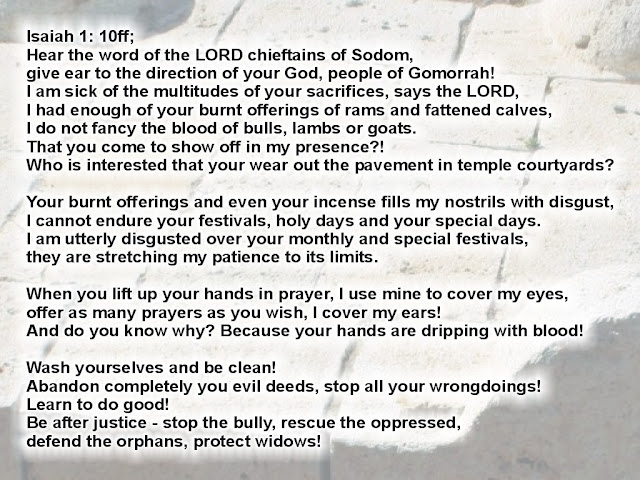Why am I vegan? Because drinking milk (and eating cheese) is against my religion!
Two years ago in Lent I gave up milk. I realized that a large percentage of American milk is produced by injecting animals with artificial growth hormone. The exact number of cows and percentage of milk involved are difficult to find, because every effort is made to keep people in the dark by the moneyed agribusiness monopolies constantly lobbying and fighting against proper and clear labeling. The bovine hormone is genetically designed, industrially produced and given to cows so that they produce substantially more milk. The animals produce more milk alright, but they pay for it with ill health and shorter lives. Every average glass of milk represents unnecessary animal cruelty. And also in consequence, every average glass of milk contains higher levels of hormone IGF-1 (Insulin-like Growth Factor 1) which are known to be harmful to humans (and following two links on this matter, which worked when this message was originally published, don't work any longer because of loooong fingers of agribusiness here they are Cancer Prevention Coalition wwwebpage on this matter and ).
For me, this technology of injecting cows with artificial hormones in order to produce more and “richer” milk is a modern version of behavior targeted by a famous biblical taboo. You probably know this taboo in its Jewish transmutation of not mixing milchig and fleishig, milk and meat. The Law of Moses repeats no less than three times (Exo 23:19; 34:26; Deut 14:21) a stern prohibition of cooking a calf/kid in it’s mother’s milk. Originally, theologians thought that this was a religious prohibition guarding against pagan rituals. But not a single trace of any such religious ritual far and near has ever been found(footnote 1). Most likely this cultural taboo had a moral and ethical background, limiting human greed and unnecessary cruelty to animals. In order for ancient farmers to have the richest milk, they had to slaughter the calves. This milk and meat taboo protected against the most natural, yet quite obscene way of cooking it in its mother’s milk. I cannot help myself but thinking that this old biblical rule actually wanted to keep iron age farmers from what we are doing so efficiently and on an industrial scale with artificial growth hormones – satisfying our greed while causing pain to lactating fellow creatures and their young. So I should correct myself; It is not the drinking of milk and the eating of cheese which is against my religion, but causing unnecessary suffering to the vulnerable creatures is!
In Lent we try to realign our lives with the divine will for ourselves and for the world. We aspire to mend our relationships with our fellow humans and other creatures and try to live responsively and lightly on Earth. Come this First Sunday in Lent to search together for "Consumerism Detox".
- - - - - - - - - - - - - - - - - - - - - - - - - - - - - - - -
(1) After the discovery of Ugaritic Texts, the first translators and interpreters in the 1930s thought they found the reference to this practice (boiling a kid in milk) in the cuneiform texts on the tablet KTU 1.23.14. Nevertheless it was a clear example of wishful translating. They wanted to find this reference and they attempted to bend the translation and interpretation against the linguistic rules. From 1970s onward more sensible translation became widely accepted standard.
Over a fire seven times the choristers of fine voice
(boil) coriander in milk,
mint in butter.
There are good reasons to translate the text this way, one of the strongest is based in the rules of Semitic poetry which would not allow parallelism kid || mint, while coriander || mint makes better sense.
 |
If you have ever looked closely into eyes of a cow, you understand what I mean.
Picture taken 2002-07-17 here. |














